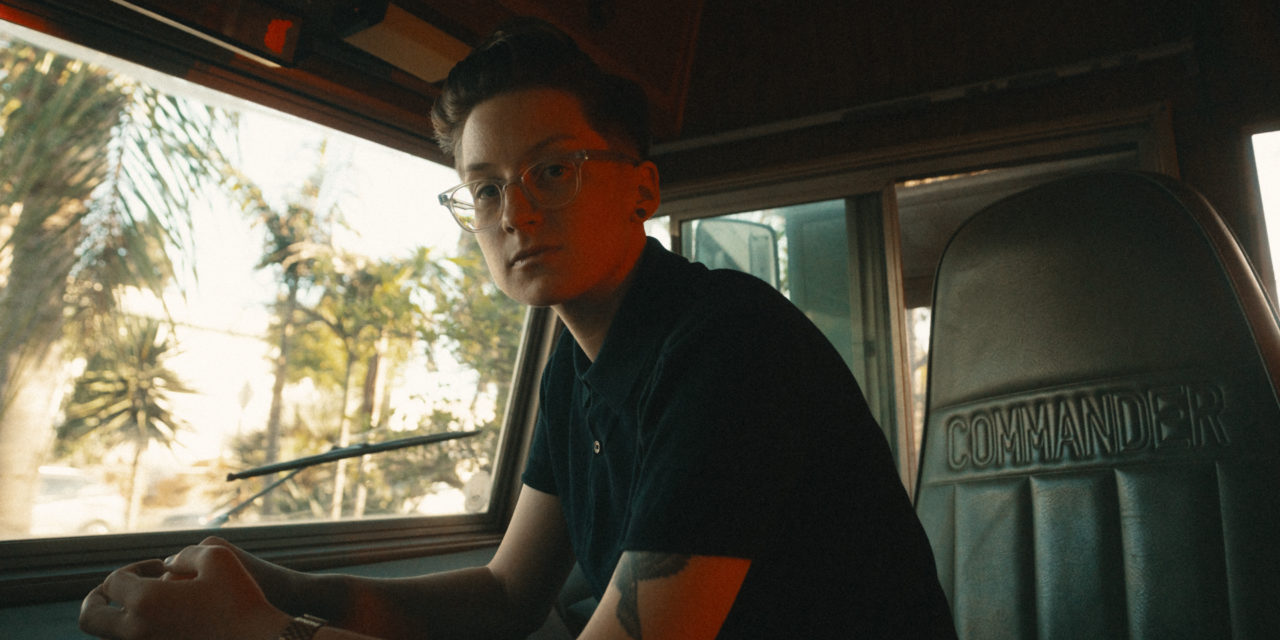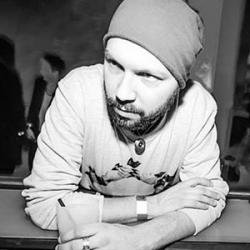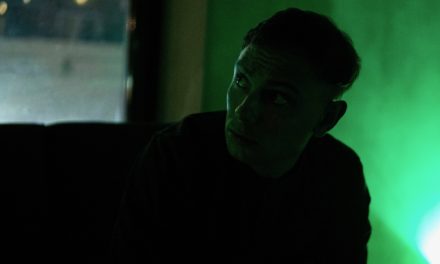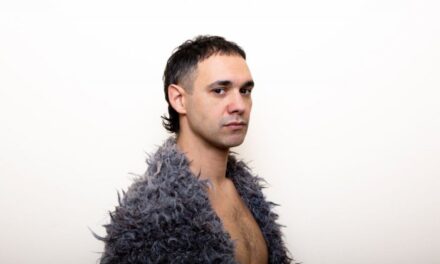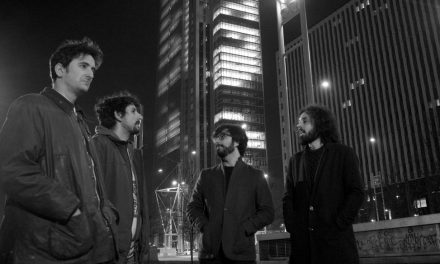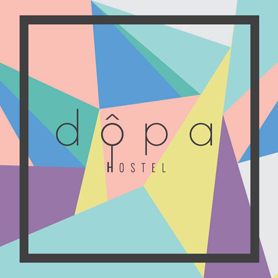Un’artista che ti stupisce e ti conquista da subito, grazie a grandi brani, grandi arrangiamenti ed una grande presenza scenica. Dopo Little Black Book, il disco di debutto pubblicato nel 2017 Sarah Walk è tornata finalmente sulle scene musicali con Another Me, il nuovo album (One Little Independent Records/Audioglobe) prodotto da Leo Abrahams (Regina Spektor, Belle and Sebastian, Paul Simon, Pulp, David Byrne, Brian Eno).
‘Questo è un album sull’emarginazione, sull’essere donna, sull’imparare a stabilire i confini senza scuse, e senza sentirsi in colpa per questo. Imparare ad amare del tutto senza aspettative’ afferma Sarah sul ultimo disco, che, sotto molti punti di vista, segna una svolta nella sua vita personale. Un album che abbiamo voluto ci raccontasse direttamente traccia dopo traccia, e che si discosta dalle piano ballads degli esordi per abbracciare un pop sofisticato. Un lavoro che affronta a testa alta le sfide di essere una queer woman sottolineando il turbinio interiore, tra difficili momenti di depressione e rinascita personale. Altamente autobiografico, trasuda trasformazione e cambiamento, misoginia e vulnerabilità.
UNRAVEL
This is one of the hardest songs I’ve ever had to sing. Unravel was written in the depths of a lot of pain for me, learning how to set boundaries and sit with uncertainty and discomfort by saying no when certain dynamics became toxic. I was really trying to learn how to exist without shrinking or apology or holding on to guilt, and it wasn’t until later that I really understood how important that is because it helps define what you will and will not allow in how you are treated. It sets a precedent that relationships are conditional upon the respect and value you receive.
Questa è una delle canzoni più difficili che abbia mai dovuto cantare. Unravel è stata scritta nel profondo di tanto dolore, imparando a fissare dei confini, a starci dentro con incertezza e disagio dicendo di no quando alcune dinamiche diventando tossiche. Stavo davvero cercando di imparare a esistere senza ridurmi a sentirmi minuscola, a scusarmi o aggrapparmi al senso di colpa e solo più tardi ho veramente capito quanto sia importante perché aiuta a definire ciò che vuoi e come non permettere di essere trattata. Stabilisce un precedente che determina che le relazioni siano condizionate dal rispetto e dal valore che si riceve.
WHAT DO I WANT?
This song started as a love letter to my music. It touches on my never ending nostalgia, difficulty with decision making and concern about making the wrong choice. Sometimes it’s easier to be so overwhelmed by what to do that you don’t do anything until someone else makes a decision for you.. I initially had a demo of this on the piano and when we went in to record it we knew it wouldn’t fit with the rest of the album stylistically, so I changed the key and started playing the bass line on a synth and the rest was built and reshaped from that.
Questa canzone è iniziata come una lettera d’amore alla mia musica. Si tratta di una nostalgia senza fine, di difficoltà nel processo decisionale e della preoccupazione di fare la scelta sbagliata. A volte è più facile essere così sopraffatti da cosa fare che non si fa nulla fino a quando qualcun altro prende una decisione al tuo posto. Inizialmente ho avuto una demo di questo brano al pianoforte e quando siamo andati a registrarla sapevamo che non sarebbe stata adatta con il resto dell’album stilisticamente, così ho cambiato visione e ho iniziato a suonare la linea di basso su un synth e il resto è stato costruito e rimodellato da questo punto.
ANOTHER ME ( FIX MYSELF )
Another Me was written when I was in the middle of therapy trying to allow myself to fully exist in a lot of my close relationships. I was feeling like certain decisions in my life that I had made may have steered my of course and shrunken me…. I’ve always thought so fondly of the past, often times I’m sure in a very inaccurate way, but I was remembering a version of me that used to feel stronger and didn’t know what happened to her….It led to me to writing this song which was one of the quickest writes on the album. I really liked the idea of talking directly to another version of myself, mourning the one that I could have been or that used to be…. trying to find her and not let her disappear.
Another Me è stata scritta quando ero nel bel mezzo della terapia cercando di permettermi di esistere appieno in molte delle mie relazioni intime. Stavo ritenendo come determinanti decisioni che nella mia vita avevo preso e che potevano avermi guidato a chiudermi in me… Ho sempre pensato con affetto al passato, spesso convinta in modo errato, ma stavo ricordando una versione di me che si sentiva più forte e non sapevo cosa le fosse successo….
Mi ha portato a scrivere questa canzone che è stata una delle scritture più veloci dell’album. Mi è piaciuta molto l’idea di parlare direttamente con un’altra versione di me stessa, rimpiangendo quella che avrei potuto essere o che una volta ero…. cercando di trovarla e non lasciarla scomparire.
NOBODY KNOWS
I wanted to push myself instrumentally on this album and take some risks. I needed to get out of the same patterns of writing so I detuned my guitar into something where I didn’t know what chords I was playing and the beginning progression of Nobody Knows came. This is one of the more lyrically ambiguous songs on the album which was a challenge for me. It’s about losing faith and feeling complacent, learning how to be comfortable in the unknowing.
Volevo spingermi oltre strumentalmente in questo album e prendermi qualche rischio. Avevo bisogno di fuggire dallo stesso pattern di scrittura così ho depotenziato la mia chitarra in qualcosa di cui non sapevo che accordi stavo suonando e la progressione iniziale di Nobody Knows è saltata fuori. Questa è una delle canzoni liricamente più ambigue dell’album ed è stata una sfida per me. Si tratta di perdere la fede e di sentirsi compiaciuti, imparando a sentirsi a proprio agio nell’inconsapevole.
SAME ROAD
I wrote ‘Same Road’ in 2017 when I was in a writing session in London. I had just started dating my now fiance and was spending a lot of time away traveling and on tour. Over a lot of my previous relationships I began to believe that I didn’t know how to love, and this was the first time I realized that wasn’t true, I just hadn’t been with the right person. Nothing felt like more than what it was; distance didn’t have anxiety or jealousy attached to it. I liked the idea of seeing your love everywhere in everything, from the canyons to the beach…. and the peace that comes with knowing that the journey you’re on is a collective one.
Ho realizzato ‘Same Road’ nel 2017 quando ero in una sessione di scrittura a Londra. Avevo appena iniziato a uscire con la mia attuale compagna e stavo trascorrendo un sacco di tempo lontano in viaggio e in tour. Nel corso di molte delle mie precedenti relazioni ho cominciato a credere di non saper amare, e questa è stata la prima volta che ho capito che non era vero, semplicemente non ero stata con la persona giusta. Niente sembrava di più di quello che era; nel tempo non avevo più ansia o un morboso attaccamento. Mi è piaciuta l’idea di vedere il suo amore ovunque, in tutto, dai canyon alla spiaggia…. e la pace che deriva dal sapere che il viaggio che stai facendo è condiviso.
THE KEY
I wanted this song to feel like a battle with a panic attack. I’ve always struggled with anxiety and was feeling like it had grown into something bigger than me when I wrote this song. I was trying to figure out how to remember that I have the power and control over the way that I think and feel, not the anxiety. I wanted it to feel like the journey towards that discovery.
Volevo che questa canzone sembrasse una battaglia con un attacco di panico. Ho sempre lottato con l’ansia e sentivo come se fosse diventata qualcosa di più grande di me quando ho scritto questa canzone. Stavo cercando di capire come ricordare a me stessa di aver il potere e il controllo sul modo in cui penso e sento, non l’ansia. Volevo che sembrasse il viaggio verso quella scoperta.
ON THE OUTSIDE
I wanted to write a song about what it feels like to be marginalized in a way that feels really physical and visual. I love the juxtaposition of these sweeping string parts over the robotic and jagged synth arpeggio that is so consistent and technical. I almost wanted the song to feel like I was lost outside of a maze and couldn’t find an entryway, or a bad dream I’ve had before where I’m talking to people around me but nobody sees or hears me. I wanted to zoom out a bit towards the build up at the end and find a way to touch on what it’s like for people to feel silenced and how important it is to continue the dialogue of ‘the other’ to avoid these disproportionate social hierarchies to continue existing. “I plant seeds on my own, I plant seeds you call yours, my seeds my home I know I plant seeds on my own” is a reclamation of the marginalized self – I like that it feels physical and natural and brings to mind this idea of our countries history mixed with roots being planted in our dialogue today which has the power to shape the way we think in the future.
Volevo scrivere una canzone su come ci si sente ad essere emarginati in un modo che sembri davvero fisico e visivo. Adoro la giustapposizione di queste ampie parti di stringa sull’arpeggio di synth robotico e frastagliato che è così coerente e tecnico. Volevo quasi che la canzone mi sentisse come se fossi persa fuori da un labirinto e non riuscissi a trovare un ingresso, o un brutto sogno che ho avuto dove sto parlando con le persone intorno a me, ma nessuno mi vede o sente. Ho voluto zoomare un po’ verso il build up alla fine e trovare un modo per descrivere cosa vuol dire per le persone sentirsi zitte e quanto sia importante portare avanti il dialogo dell’ ”altro” per evitare queste sproporzionate gerarchie sociali per continuare ad esistere. “Pianto i semi da sola, io pianto i semi che tu chiami tuoi, i miei semi la mia casa. So che pianto i semi da sola” è una rigenerazione del sentirsi emarginato – mi piace che ci si sente fisico e naturale e mi ricorda questa idea di storia dei nostri paesi mescolata a radici radicate nel nostro dialogo di oggi che ha il potere di plasmare il nostro modo di pensare in futuro.
CRAZY STILL
Leo (Abrahams) and I wanted Crazy Still to be the one song on the album that was just a piano vocal in a room completely live. I tried a few takes one night and it didn’t feel right, so we set it aside and went back to it a few days later in a burst of spontaneity. I remember finishing a take and timidly asking Leo what he thought, aware of a mistake I made with the song structure but wanting some feedback. It was silent for a few seconds before he told me he was holding back tears. I had no idea I was on the right path, so I wanted to do one more take. I finished it and thought it was ‘the one’- I had nailed it. I asked Leo what he thought and he said “yeah it was good, but you knew it was good while you were singing it. That’s not the kind of record we’re making. Let’s go with the first one.” I’m glad we did.
Leo (Abrahams) e io volevamo che Crazy Still fosse l’unica canzone dell’album con solo una voce e pianoforte in una stanza completamente dal vivo. Ho provato un paio di volte una sera ma non mi sembrava buona, così l’abbiamo messa da parte e ci siamo tornati qualche giorno dopo in un lampo di spontaneità. Ricordo di aver finito una prova e di aver chiesto timidamente a Leo cosa ne pensasse, consapevole di un errore che ho fatto con la struttura della canzone ma che volevo comunque qualche suo feedback. Rimase in silenzio per qualche secondo prima di dirmi che stava trattenendo le lacrime. Non avevo idea di essere sulla strada giusta, quindi volevo fare un’altra versione. L’ho finita e ho pensato che fosse ‘quella’- l’avevo inchiodata. Ho chiesto a Leo cosa ne pensava e lui ha detto “sì, è stato bella, ma sapevi che era buono mentre la cantavi. Non è il tipo di disco che stiamo facendo. Andiamo con la prima.” Sono contenta che abbiamo fatto quella scelta.
TAKE ME AS I AM
One of the better things about living in LA is the access you have to so many varying landscapes around you. You’re close to the desert, the ocean, and the mountains. I’ve learned how refueling even a day trip out of the city can be for my head. ‘Take Me As I Am’ was written after I visited Joshua Tree. I was writing with Abe (Rounds) and Pete (who mixed the record) and we had zero expectation, which is always a good thing. We starting jamming and the opening progression came out – I started mumbling words over it which ended up being a refection of my time in the desert a few days prior.
Una delle cose migliori del vivere a Los Angeles è l’accessibilità ai tanti differenti paesaggi che ti circondano. Sei vicino al deserto, all’oceano e alle montagne. Ho imparato come anche una gita di un giorno fuori dalla città possa essere rigenerante per la mia testa. ‘Take Me As I Am’ è stata scritta dopo aver visitato Joshua Tree. Stavo scrivendo con Abe (Rounds) e Pete (che ha mixato il disco) e avevamo zero aspettative, che è sempre una buona cosa. Abbiamo iniziato a improvvisare e la progressione di apertura è venuto fuori – Ho iniziato a borbottare parole su di essa, che ha finito per essere un richiamo del tempo trascorso nel deserto pochi giorni prima.
FLOWERS GROW
It took me so long to finish thing song. I had the piano arpeggio and the beginning opening lyrics but didn’t know where to go, I just knew how fluid and dream like the song felt to me. It’s the songs that I keep coming back to that I know have some potential and I try to be patient because the best songs usually come quickly for me. I had the idea lying around for over two years and then one day I was reading through some poetry by Mary Oliver, one of my favorite poets, and read the poem ‘White Flowers’ and immediately thought of this song. I felt like it captured the entire feeling of where I wanted the track to go, and shortly there after I put together the lyrics. It brought me back to lying on the grass throughout the years of growing up, as a kid looking at the clouds and then a teenager running away from home, needing to feel the support of the earth below me. I imagine myself lying there, in the grass, with bright red behind my eyelids from the sun beaming down onto me when I listen to this song.
Mi ci è voluto così tanto per finire la canzone. Avevo l’arpeggio del pianoforte e l’inizio dei testi di apertura, ma non sapevo dove andare, sapevo solo quanto fosse fluida e sognavo come mi sembrava la canzone. Sono le canzoni a cui continuo a tornare che so aver un certo potenziale e cerco di essere paziente perché le migliori canzoni di solito vengono fuori rapidamente per me. Ho avuto l’idea in ballo per più di due anni e poi un giorno stavo leggendo alcune poesie di Mary Oliver, una dei miei poeti preferiti, e ho letto il poema “White Flowers” e ho subito pensato a questa canzone. Mi sentivo come se catturasse l’intera sensazione di dove volevo che la traccia andasse, e poco dopo ho messo insieme i testi. Mi ha riportato a sdraiarmi sull’erba durante gli anni della crescita, da bambina guardando le nuvole e poi un adolescente che scappa da casa, che ha bisogno di sentire il sostegno della terra sotto di se. Mi immagino sdraiata lì, nell’erba, con il rosso brillante del sole dietro le palpebre che si irradia su di me quando ascolto questa canzone.
NO GOOD WAY TO SAY GOODBYE
No good way to say goodbye is one of the more straight ahead songs on the record. I played the piano part live with Abe on the drums because I wanted it to feel as honest and unveiled as possible. It’s almost an admission that after all the songs I’ve written and things I’ve learned and grown from in my life through experience, the only thing that I really feel like I know with certainty is how hard it is for me to accept change and move on. The build up at the end came from a wrong chord that I played when I was writing it which I loved because it felt like such a shift in the mood and has a darkness and gloominess to it. It also felt like that shift was unexpected and I wanted the listener to feel out of control as the song went on. In the background I’m singing ‘Oh I feel it coming, Oh I feel you go”, the frightening realization that as time goes on and I get older, loss of loved ones is inevitable. The ending was really inspired by one of my favorite Radiohead songs ‘The Daily Mail’.
No good way to say goodbye è una delle canzoni più dritte del disco. Ho suonato la parte del pianoforte dal vivo con Abe alla batteria perché volevo che si sentisse il più trasparente e reale possibile. È quasi un’ammissione che dopo tutte le canzoni che ho scritto e le cose che ho imparato e con cui sono cresciuta nella mia vita grazie all’esperienza, l’unica cosa che sento davvero di sapere con certezza è quanto sia difficile per me accettare il cambiamento e andare avanti. La costruzione del brano alla fine è arrivata da un accordo sbagliato che ho provato quando stavo scrivendo e che ho amato perché mi sembrava un tale cambiamento di umore grazie a una oscurità e tenebrosità in esso. Sembrava anche che quel cambiamento fosse inaspettato e volevo che l’ascoltatore si sentisse fuori controllo mentre la canzone scorreva. Sullo sfondo canto ‘Oh, lo sento arrivare, Oh, ti sento andare”, la spaventosa consapevolezza che con il passare del tempo e invecchiando, la perdita dei propri cari è inevitabile. Il finale è stato davvero ispirato da una delle mie canzoni preferite dei Radiohead ‘The Daily Mail’.

